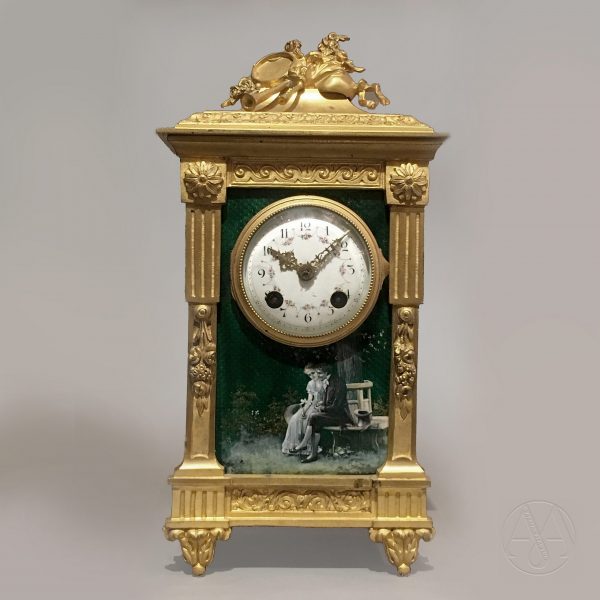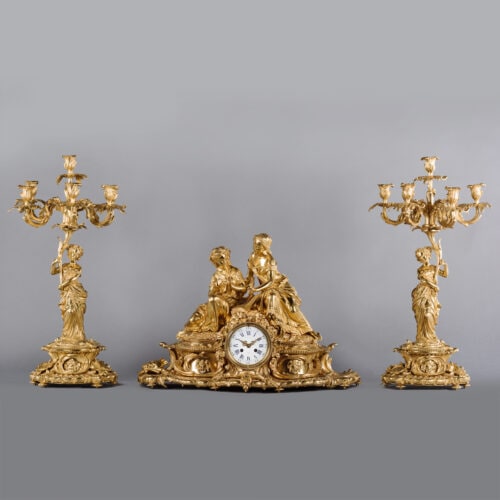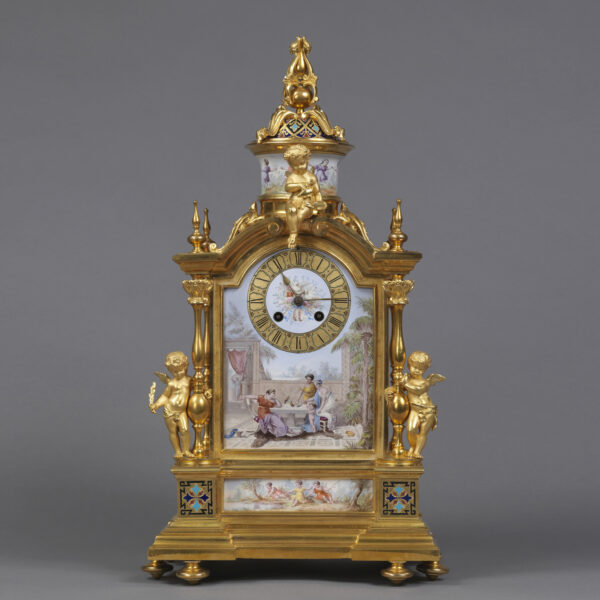润高兄弟公司
A Fine Napoleon III Three-Piece Clock Garniture
£52,000
A Fine Napoleon III Gilt-Bronze and Sèvres-Style Turquoise-Ground Porcelain Three-Piece Clock Garniture. France, Circa 1860. Comprising a mantle clock...
尺寸
Height: 74 cm (30 in)Width: 43 cm (17 in)
深度:20厘米(8英寸)
描述
A Fine Napoleon III Gilt-Bronze and Sèvres-Style Turquoise-Ground Porcelain Three-Piece Clock Garniture. France, Circa 1860.
Comprising a mantle clock and a pair of urns. The Sèvres style porcelain is finely painted with scenes from the life of ‘L’Amour et Psyché, enfants’ in celebration of love. The porcelain elsewhere finely painted with flowers and raised ‘jewelled’ beaded decoration. The clock with central ovoid urn with loop handles and surmounted by a gilt-bronze dancing putto. The dial with Roman numerals and signed ‘Raingo Frès / Paris’. Flanked by seated gilt-bronze putti blowing horns. The twin barrel clock movement with countwheel strike on bell. The pair of side urns are en suite.
The dial signed Raingo Frères, Paris.
France, Circa 1860.
Approximate Dimensions:
Clock:
Height: 74 cm / 29 inches
Width: 43 cm / 17 inches
Depth: 20 cm / 8 inches
Side Urns:
Height: 51 cm / 20 inches
Width: 16 cm / 6 inches
Depth: 16 cm / 6 inches
日期
约1860年
原产地
法国
中型
Gilt-Bronze and Porcelain
签名
The dial signed 'Raingo Freres, Paris'.
There were four Raingo brothers who began as clockmakers before expanding their business to encompass decorative bronze casting. It is not known which Raingo brother was apprenticed in Paris before moving to Belgium, circa 1800, probably for political reasons, and from the signatures on some of his clocks, it is known that he worked in Gand and Tournay. Later, in 1823, he is recorded as being clockmaker to the duc de Chartres.
The company became Raingo Frères in 1825 and thereafter clocks bear their signature with various Paris addresses. They had a workshop at 102 Rue Vielle du Temple in 1829, and from 1840 to 1850 in Rue de Saintonge. In the 1840s Raingo were accused of conterfiting Ruolz metal plating techinique which had been patented by Christofle. Specialising in the manufacture of clocks, for which they favoured sculptural ornament, and this led them to begin casting their own bronzes from the 1850s. After 1860 they moved again back to Rue Vielle du Temple where they started to sell bronzes, not from an edition but cast in a small number, generally marked with the stamp “R.F.” In 1880 the widow of Gabriel-Jules Raingo was joined her two sons, Eugène and Georges. This association was regularly extended until 1 January 1892. Eugène died in February 1895. Mme Raingo and her son Georges modified their company accordingly in July of the same year. Eugene’s rights are shared between Georges and his three sisters. The corporate name becomes “Raingo et Cie”, but the business name remains “Raingo Frères”.
The firm exhibited at many of the important exhibitions of the second half of the 19th century, including London in 1862 and Paris in 1900. Known for the fine quality of its ormolu in particular superb gilding and chasing, Raingo also cast large patinated bronze statuary for leading sculptors of the day including A. Carrier-Belleuse, Grégoire, Loison, Magnier, A. Moreau, Peyre, Pradier and Salmonson.
By the turn of the 20th century Raingo Frères are still recorded to be casting in bronze for a handful of artists, but by this time their mainstay was producing lighting along with artistic metalwork.
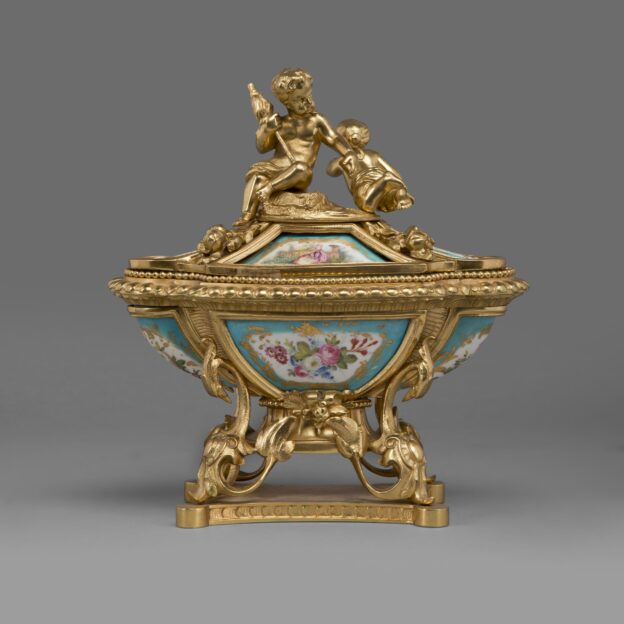




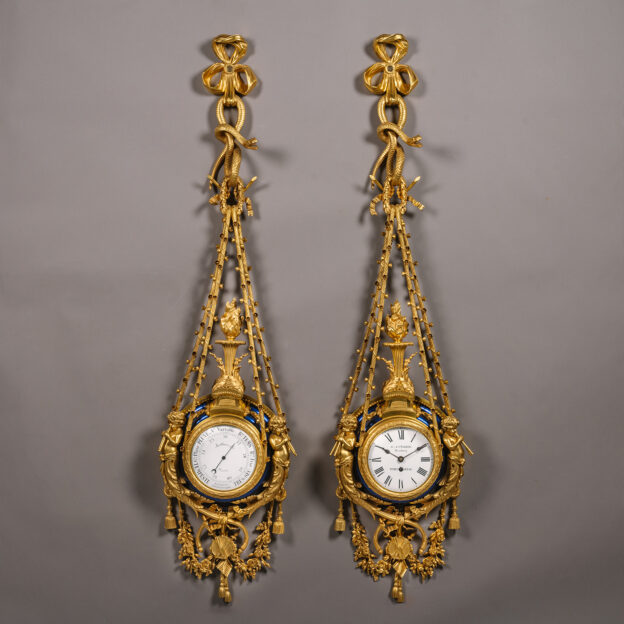
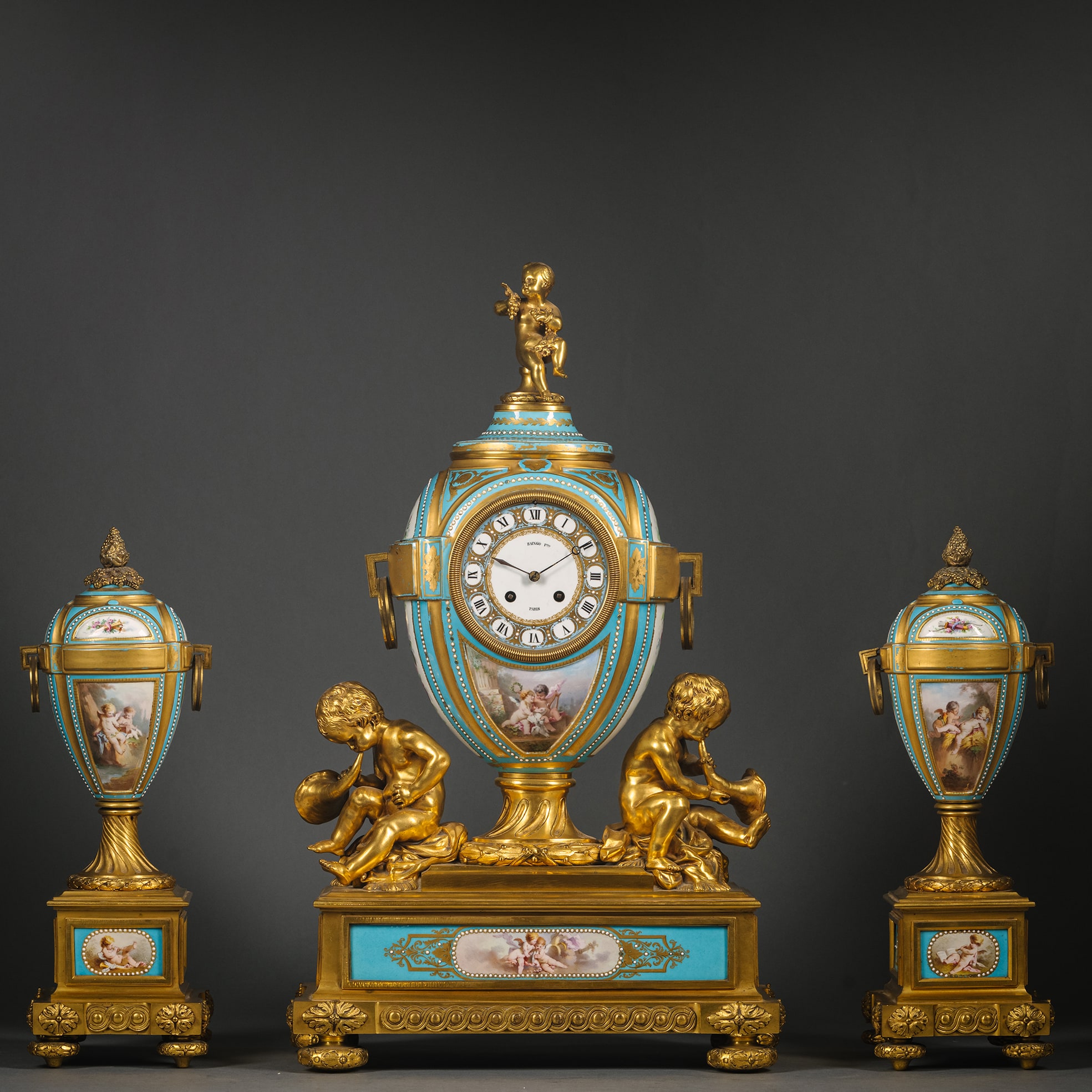
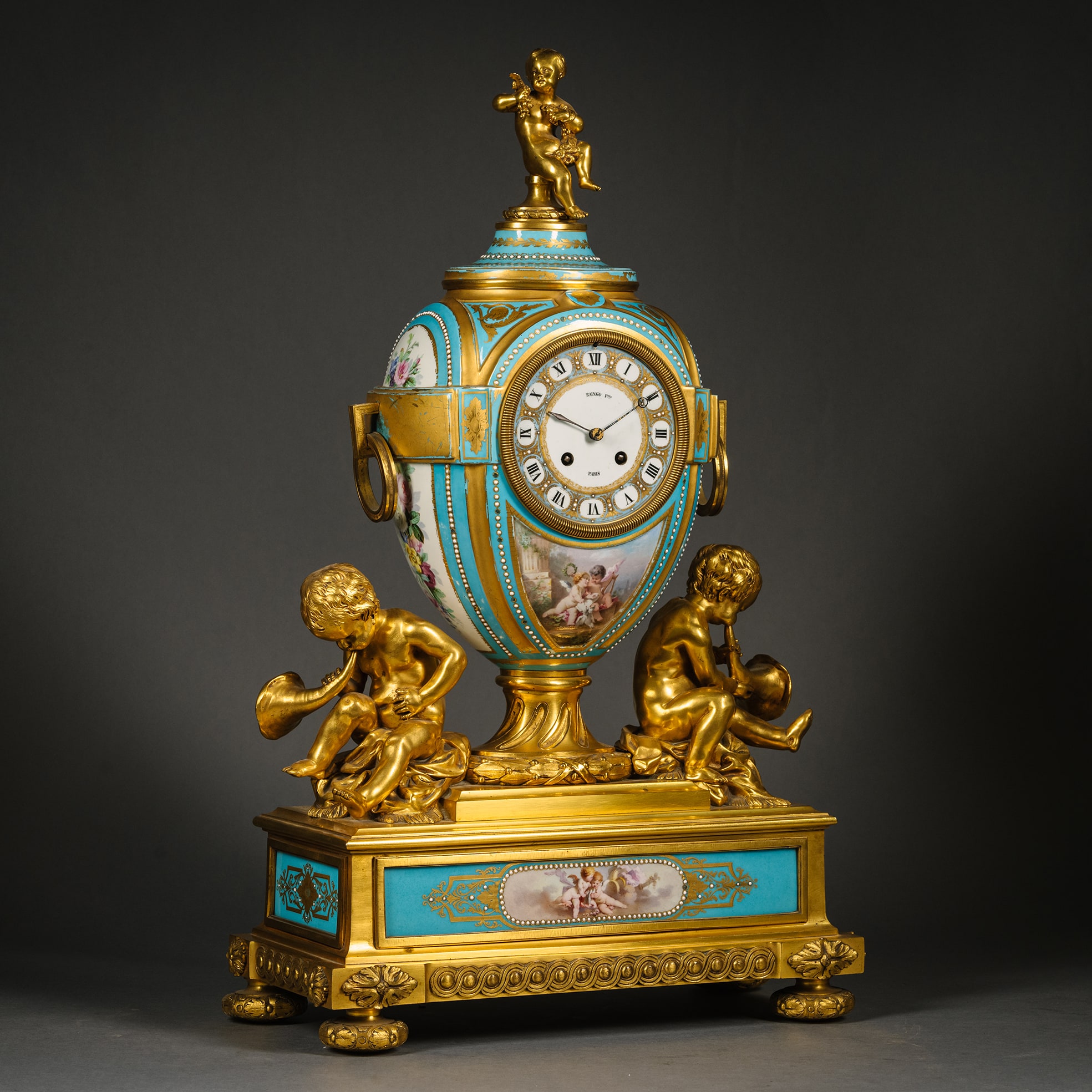
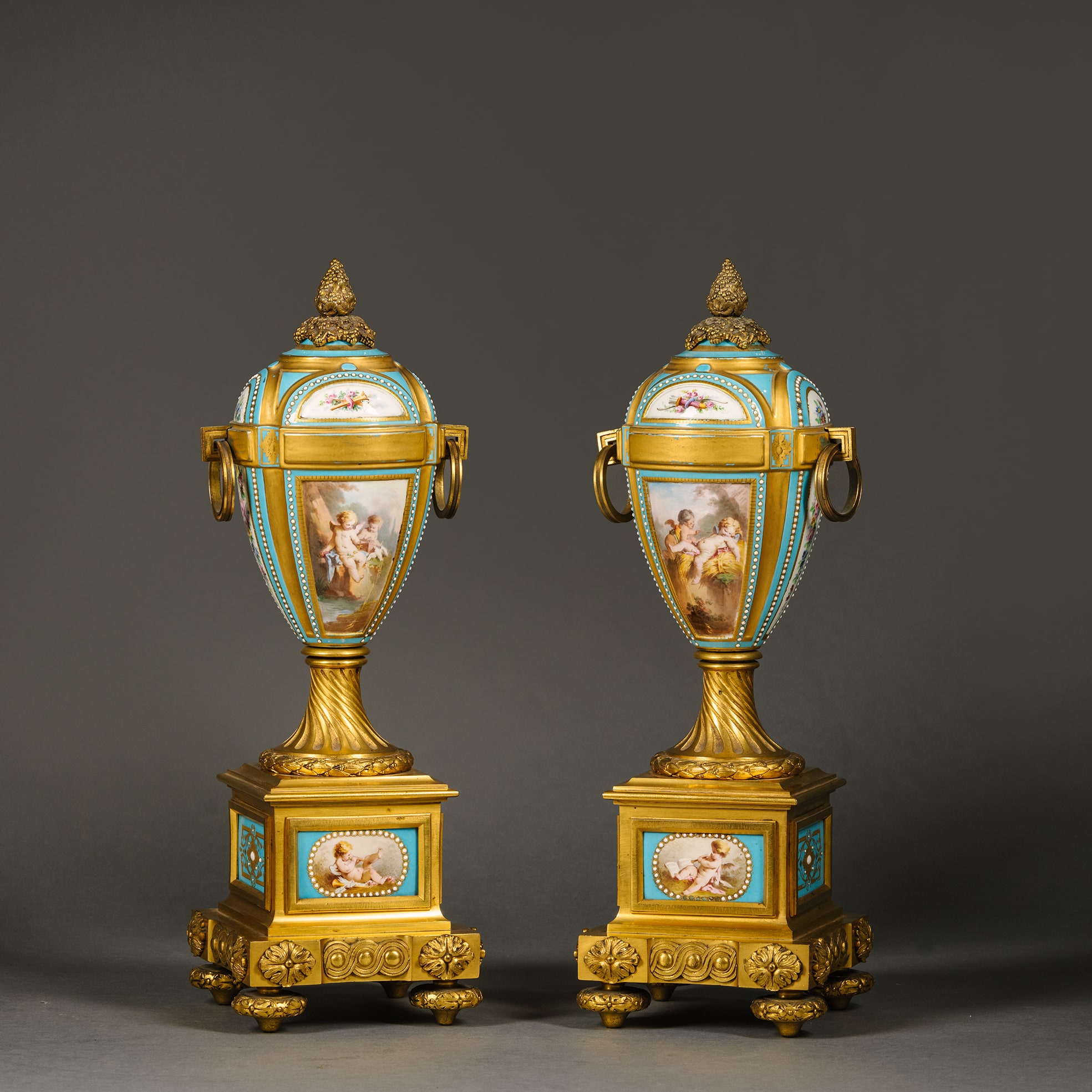
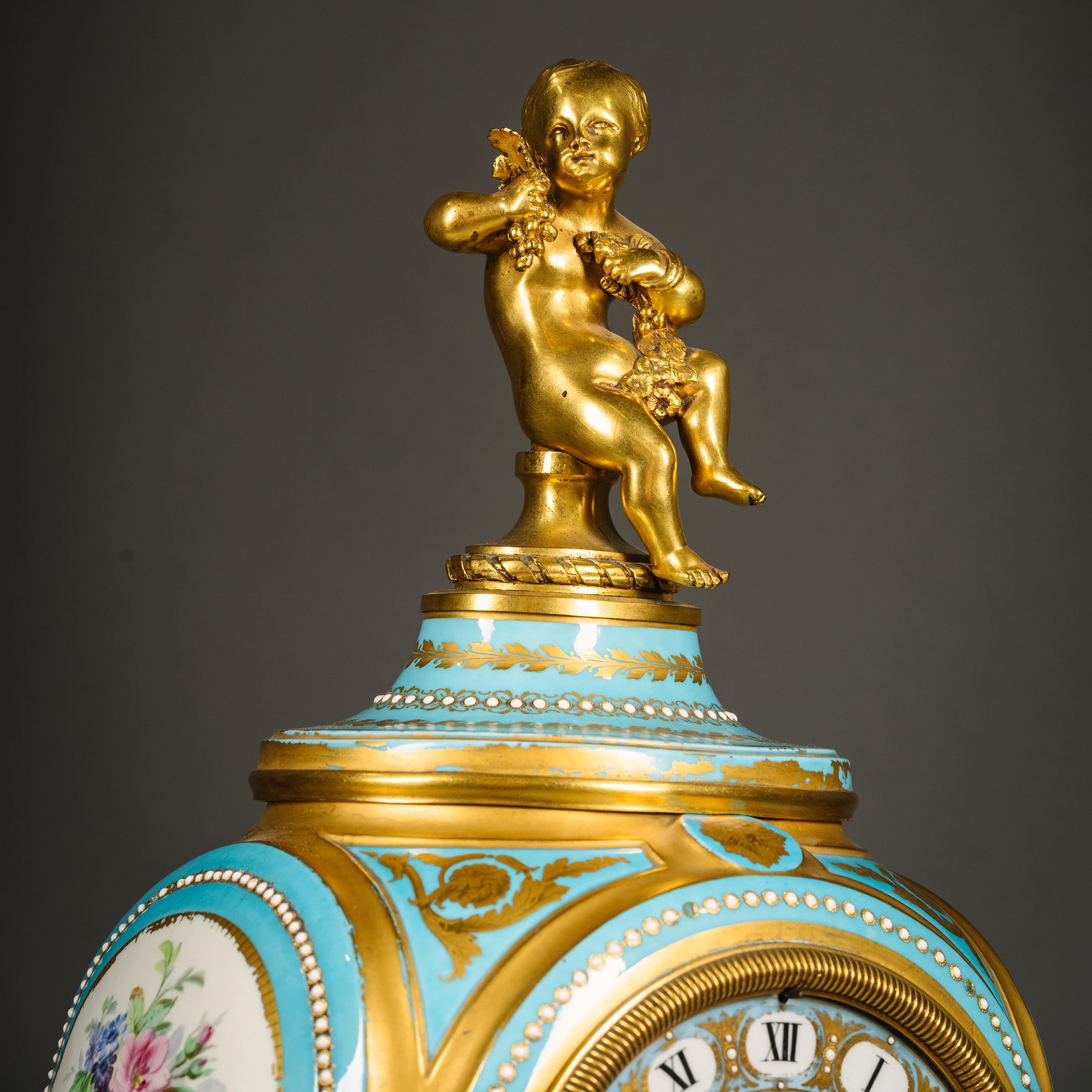
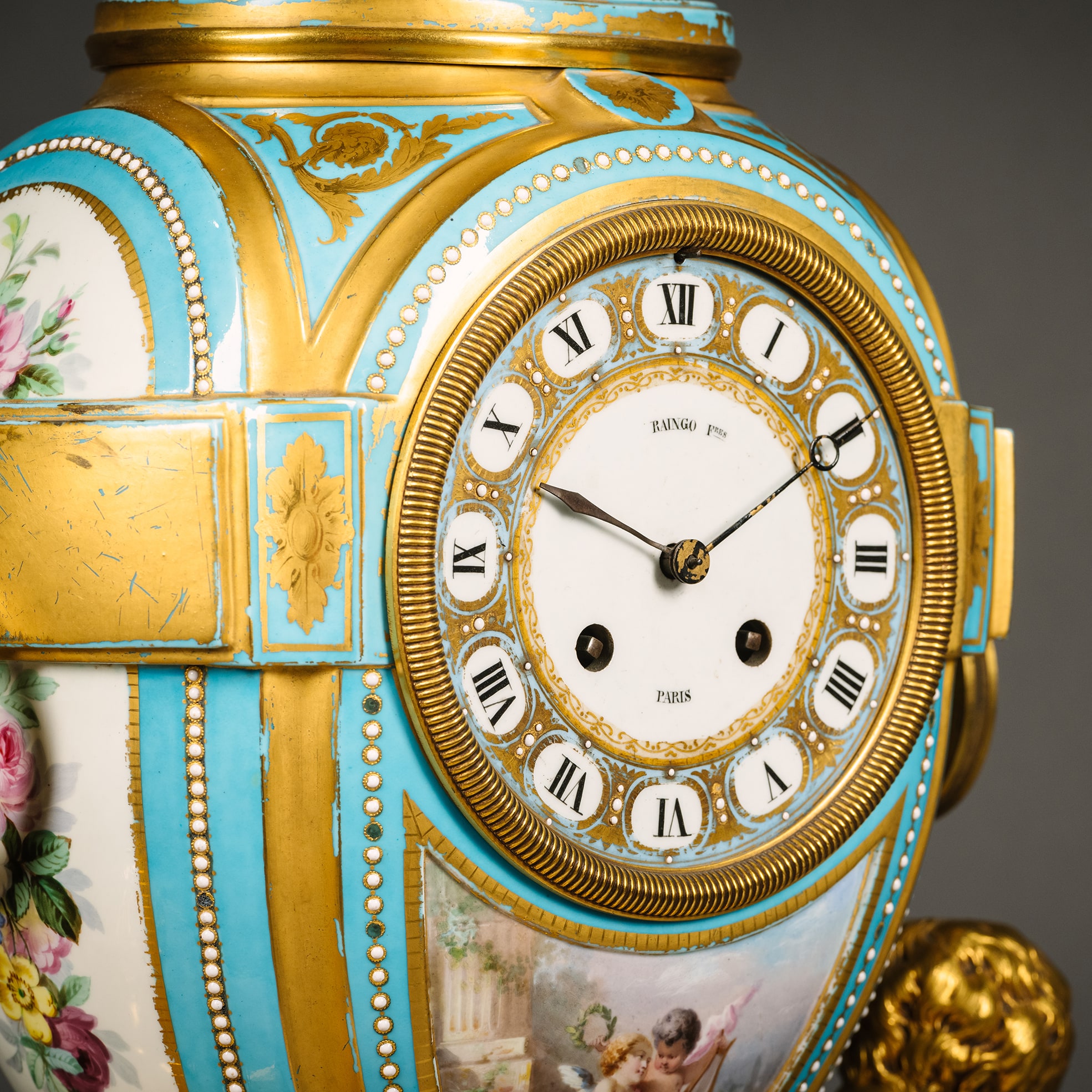
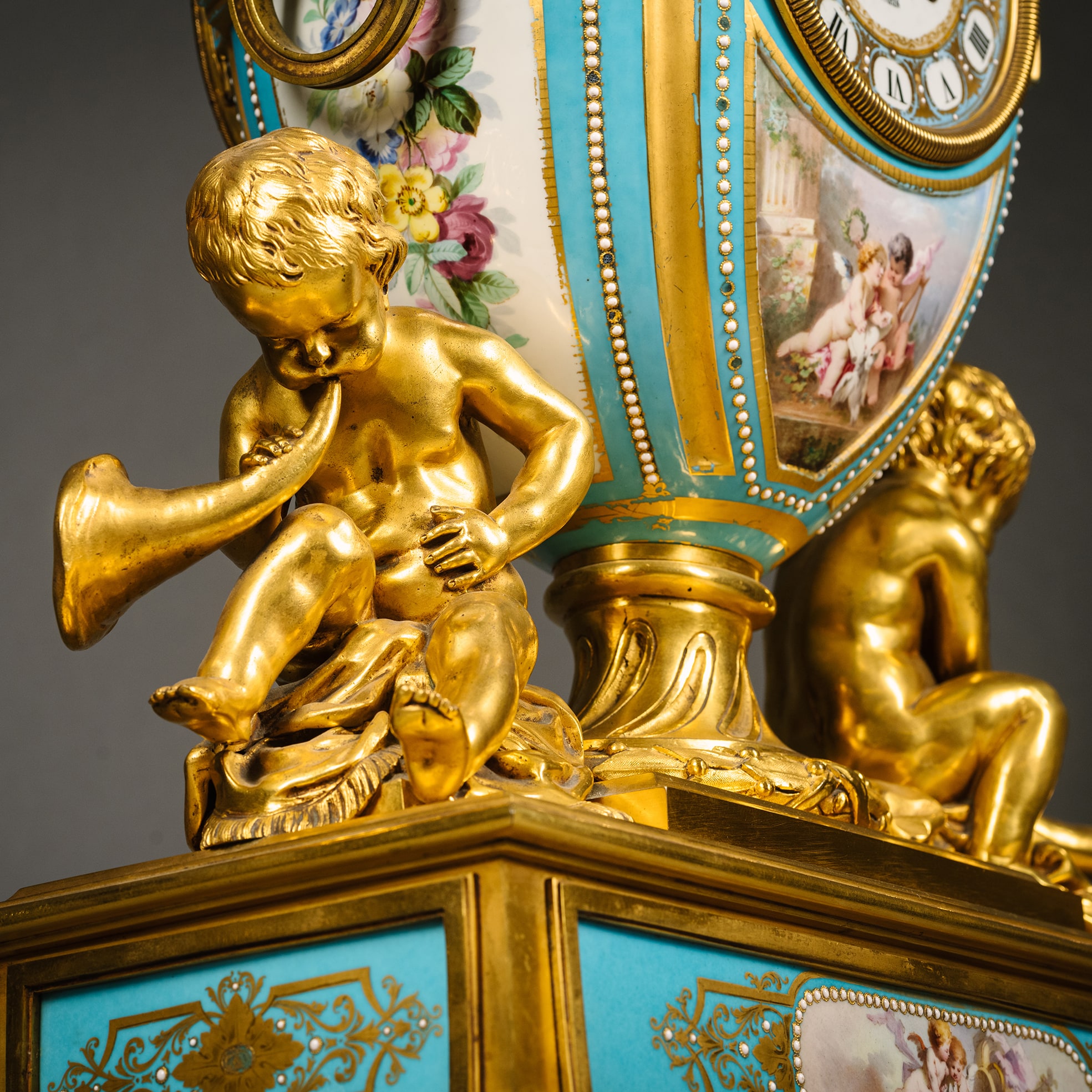
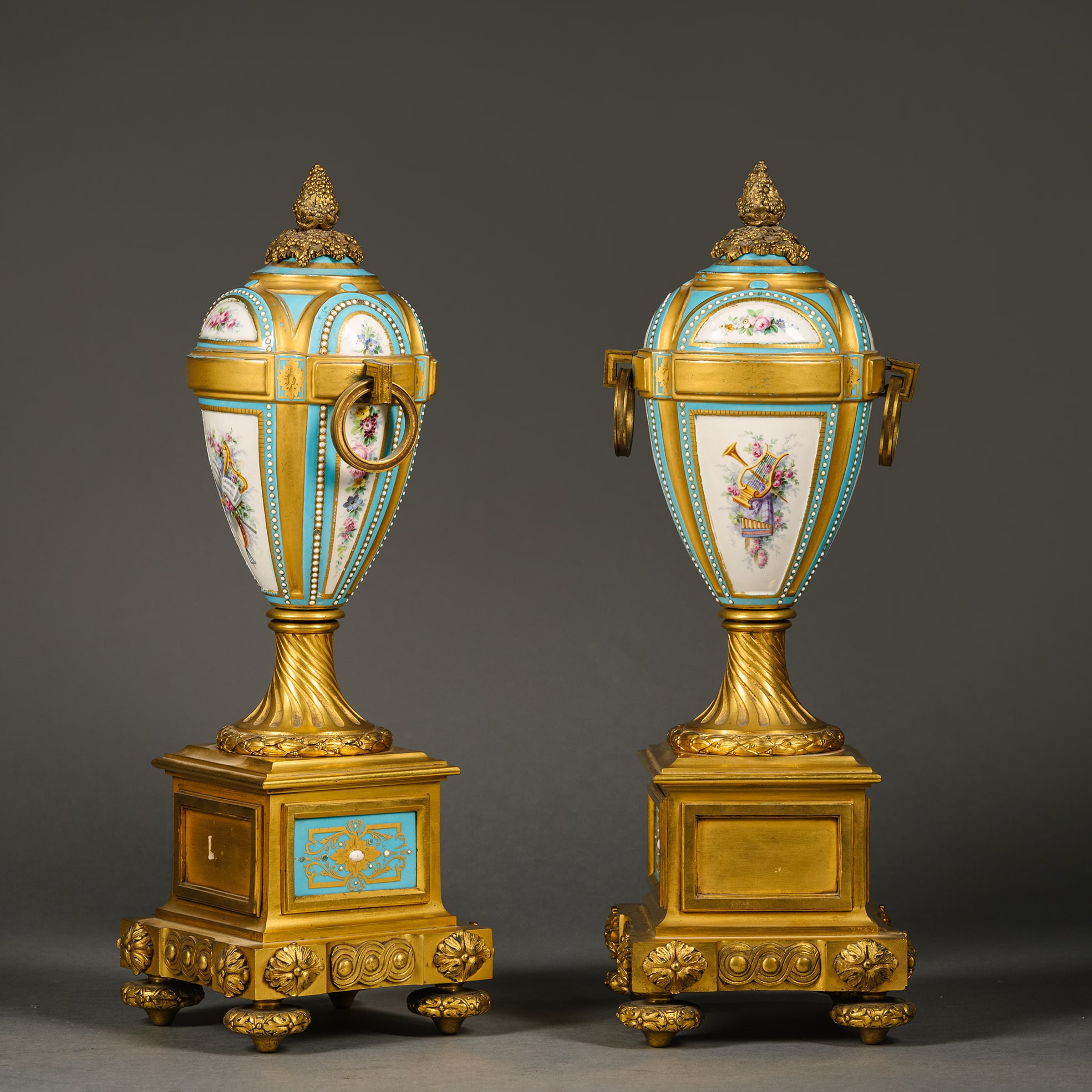
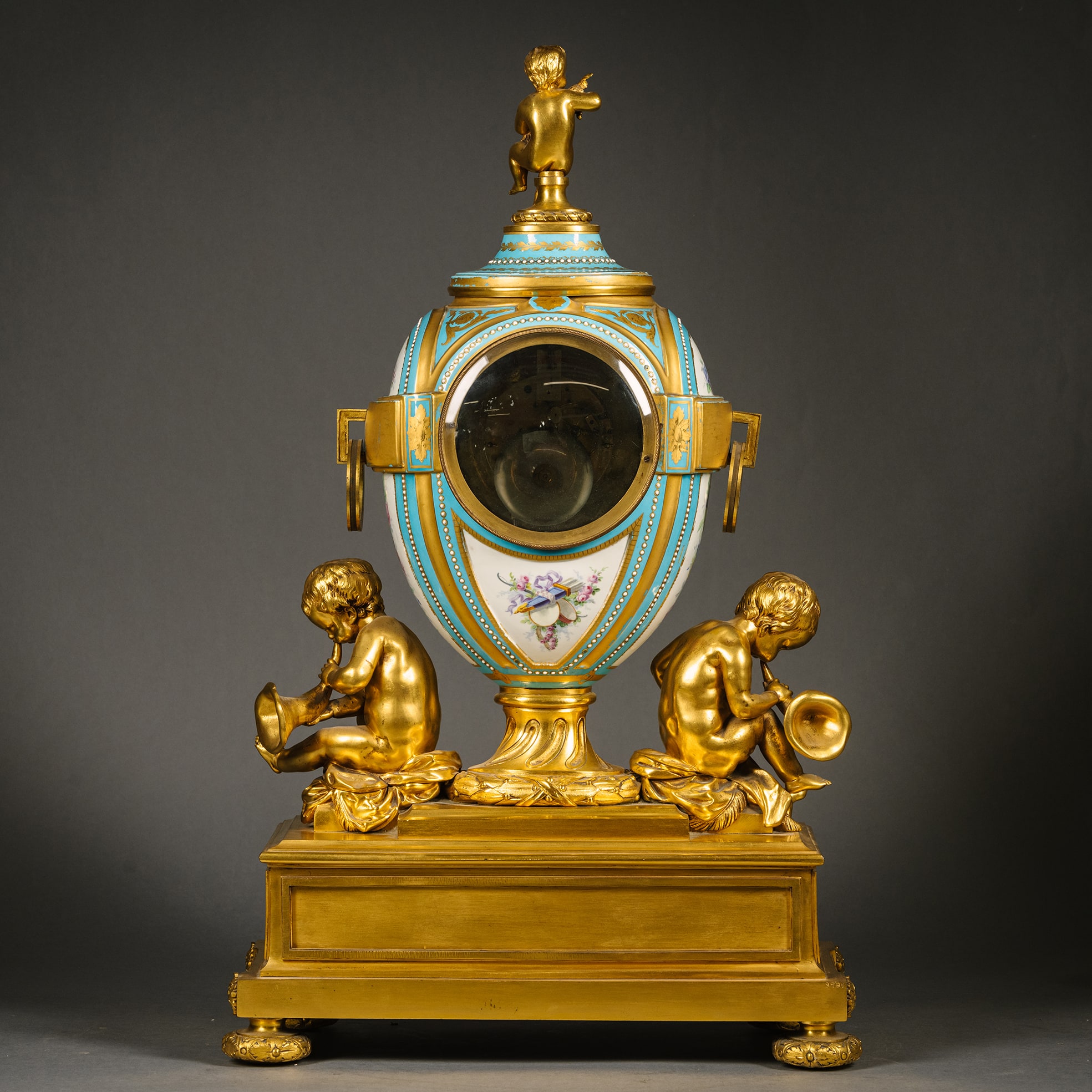
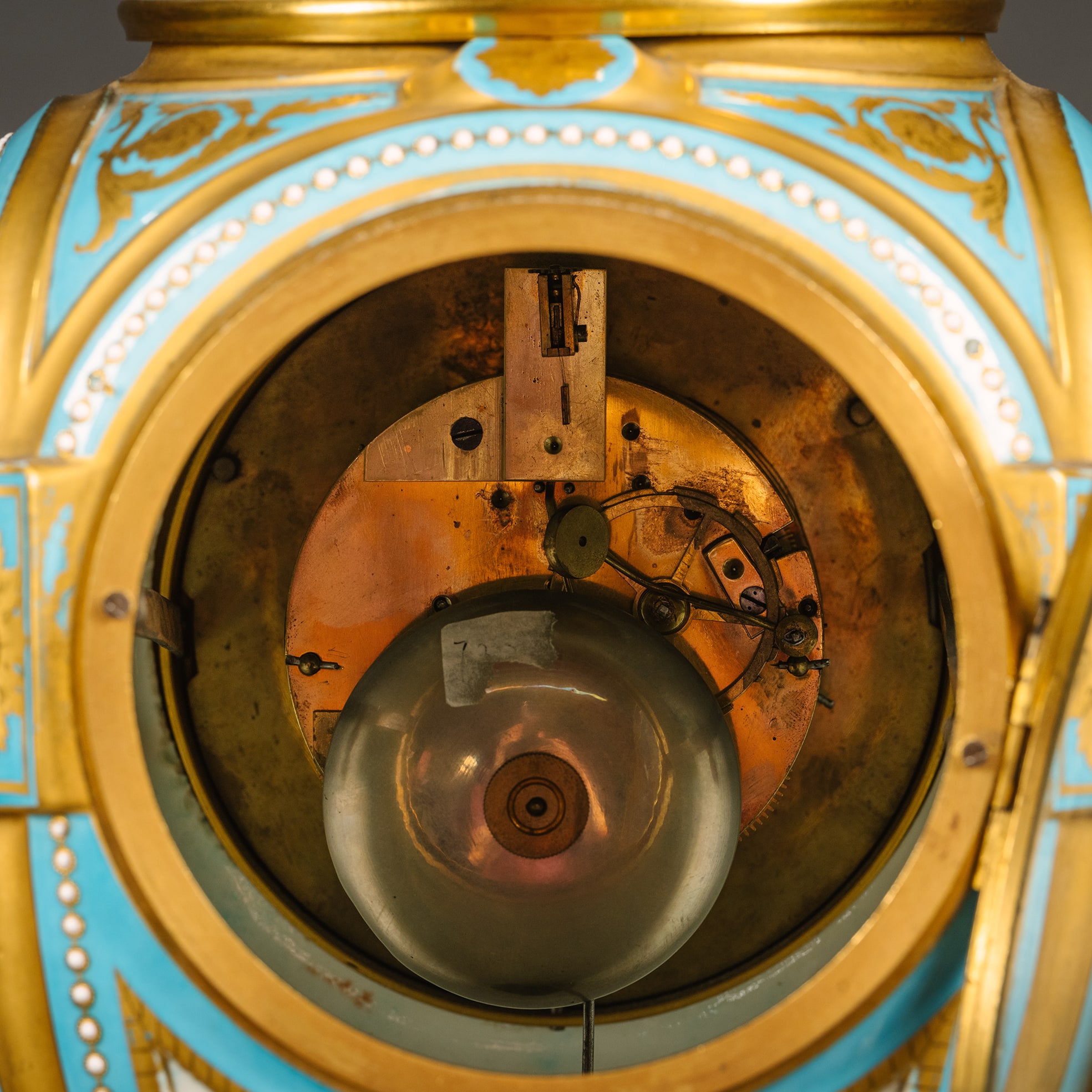

 印刷品
印刷品